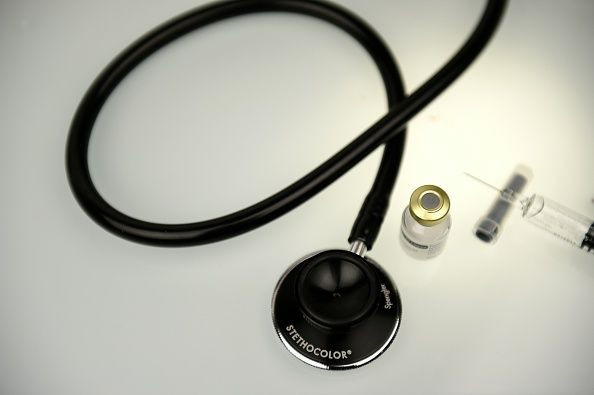Medicare's Diabetes Prevention Program May Protect Elderly People With Prediabetes From Full-Blown Diagnosis

Nearly 30 million Americans have diabetes, and 1.4 million new cases are diagnosed each year. The silver lining is that people who recognize the signs of prediabetes can prevent a full-blown diagnosis. Without lifestyle changes to improve their health, the Centers for Disease Control and Prevention said 15 to 30 percent of prediabetics will develop type 2 diabetes within five years. Now, the Obama Administration has announced the possibility of a prevention program that will make it easier for patients to adopt a healthier lifestyle.
The program is still in the experimental stage, but it was designed to slow the diabetes rate in the U.S. Health officials believe it could help cover prevention services for the 86 million Americans who are currently living with prediabetes. The Washington Post reported Medicare could soon cover the program, "the first time an experimental prevention initiative has met the financial test to become part of the huge federal health insurance program for older Americans."
To find out if an initiative like this would be worth the effort, officials conducted a five-year pilot study that cost $11.8 million at YMCAs throughout the country. Results showed elderly people lost weight thanks to regular lifestyle counseling and meetings that provided participants with healthy eating tips and exercise — both of which help keep full-blown type 2 diabetes at bay. Overall, more than 7,7000 participants lost an average of 5 percent of their body weight.
"This program has been shown to reduce health care costs and help prevent diabetes, and is one that Medicare, employers and private insurers can use to help 86 million Americans live healthier," said Department of Health & Human Services (HHS) Secretary Sylvia M. Burwell in a press release. "The Affordable Care Act gave Medicare the tools to support this groundbreaking effort and to expand this program more broadly. Today’s announcement is a milestone for prevention and America’s health."
The government has not yet laid out the plan for how the diabetes prevention service will be financially covered, whether it will be a reimbursement process or paid for as part of a package doctors use to monitor patient progress. Diabetes is expensive, too: In 2012, the estimated cost of care was $245 billion, which breaks down to $179 billion in direct medical costs and an additional $69 billion in lost productivity.
According to the HHS report, officials estimate every Medicare beneficiary enrolled in the prevention program will save $2,650 over a 15-month period.
Americans over the age of 65 who are eligible for Medicare benefits make up 25.9 percent of the diabetic population, which is why targeting the Medicare beneficiaries first can help provide insight into how the program can help improve diabetes rates across the board.
High blood sugar levels mark prediabetes, but patient levels are still too low to be considered type 2. An estimated 90 percent of Americans who are prediabetic don’t even know it, so intervention without screening can be difficult. The condition worsens without treatment, and eventually type 2 diabetes can cause heart and kidney problems, blindness, stroke, and even amputation.
Overall, this is an opportunity to improve prediabetic health and prevent progression to a diagnosis. Eating healthy foods, including physical activity in daily routine, and maintaining a health weight may help bring blood sugar levels back down to normal.



























